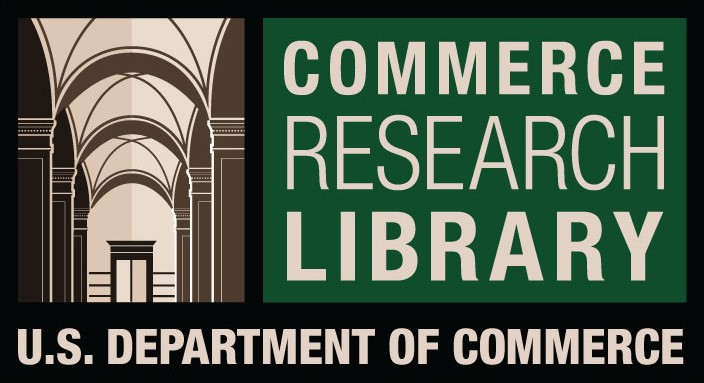Study of Emotional Dissonance and Service Delivery among the Employees of Banking Sector: A Mediating Effect of Emotional Intelligence and Moderating Effect of E- Banking
DOI:
https://doi.org/10.61841/61s8dy93Keywords:
Emotional Dissonance, E-Banking, Service DeliveryAbstract
In service industries, most of the organizations many organizations are now understanding that service delivery is the key component to satisfy customer needs and wants. Organization success is depending upon customer satisfaction and equally important to customers as well as employees.
Objectives: Banks, as one of the most important financial intermediaries, provide the necessary channel through which savings may be utilized as investments. Thus, the role of banks and bankers in economic development of a country cannot be undermined. Banking sector employees are facing a lot of psychological problems at workplace; these problems are associated with their emotions and attitudes. In workplace, bankers are involved delivering service to customers for this they are emotionally involved and hide their actual emotions to fulfil the emotional requirement of their job. The difference between actual and emotions and expressed emotions is called as emotional dissonance (ED). In this situation, the role of emotional intelligence (EI) as mediator and E Baking as moderator also investigated. Method: A descriptive quantitative research design has been used; data collected through adopted and modified questionnaires; data has been analyzed in SPSS v20, AMOS v 20.CFA. Path analysis techniques have been applied and hypothesis tested. For mediation analysis Baron and Kenny (1984) was used.
Results: Results indicated that emotional dissonance has significant negative impact on service delivery. More over emotional intelligence mediates the relationship between emotional dissonance and service delivery (SD) and reduces the negative impact of (ED) on service delivery. At last, E- banking moderates the relationship between (ED) and (SD).
Downloads
References
[1] . Glomb, T.M., J.D. Kammeyer-Mueller, and M. Rotundo, Emotional labor demands and compensating wage differentials. Journal of applied psychology, 2004. 89(4): p. 700.doi.org/10.1037/0021- 9010.89.4.700
[2] . Lewig, K.A. and M.F. Dollard, Emotional dissonance, emotional exhaustion and job satisfaction in call centre workers. European journal of work and organizational psychology, 2003. 12(4): p. 366- 392doi.org/10.1080/13594320344000200
[3] . Bar-On, R., Emotional intelligence: An integral part of positive psychology. South African Journal of Psychology, 2010. 40(1): p. 54-62.doi.org/10.1177/008124631004000106
[4] . Poon, W.C., Users' adoption of e‐banking services: the Malaysian perspective. Journal of Business & Industrial Marketing, 2008./doi.org/10.1108/08858620810841498
[5] . Bakker, A.B. and E. Heuven, Emotional dissonance, burnout, and in-role performance among nurses and police officers. International Journal of Stress Management, 2006. 13(4): p.
423.doi.org/10.1037/1072-5245.13.4.423
[6] . Abraham, R., Emotional dissonance in organizations: Antecedents, consequences, and moderators. Genetic, social, and general psychology monographs, 1998. 124(2): p. 229doi.org/10.1108/01437739810210185
[7] . Rafaeli, A. and R.I. Sutton, Expression of emotion as part of the work role. Academy of management review, 1987. 12(1): p. 23-37doi.org/10.2307/257991
[8] . Jansz, J. and M. Timmers, Emotional dissonance: When the experience of an emotion jeopardizes an individual's identity. Theory & Psychology, 2002. 12(1): p. 79-95.doi.org/10.1177/0959354302121005
[9] . Ashforth, B.E. and R.H. Humphrey, Emotional labor in service roles: The influence of identity. Academy of management review, 1993. 18(1): p. 88-115.
[10] .Gronroos, C., Service quality: The six criteria of good perceived service. Review of business, 1988. 9(3): p. 10.
[11] .Darwin, C., The Expression of the Emotions in Man and Animals. Chicago (University of Chicago Press) 1965. 1965doi.org/10.7208/chicago/9780226220802.001.0001
[12] .Payne, W.L., A study of emotion: developing emotional intelligence; self-integration; relating to fear, pain and desire. 1985.
[13] .Salovey, P. and J.D. Mayer, Emotional intelligence. Imagination, cognition and personality, 1990. 9(3):
p. 185-211doi.org/10.2190/dugg-p24e-52wk-6cdg
[14] .Giannakoudi, S., Internet banking: the digital voyage of banking and money in cyberspace. Information and Communications Technology Law, 1999. 8(3): p. 205-
243doi.org/10.1080/13600834.1999.9965811
[15] .Gan, C., et al., A logit analysis of electronic banking in New Zealand. International Journal of Bank Marketing, 2006doi.org/10.1108/02652320610701717
[16] .Samphanwattanachai, B. Internet banking adoption in Thailand: A Delphi study. in Proceedings of the 24th South East Asia Regional Computer Conference. 2007.
[17] .Karjaluoto, H., M. Mattila, and T. Pento, Factors underlying attitude formation towards online banking in Finland. The International Journal of Bank Marketing, 2002. 20(6): p. 261- 272doi.org/10.1108/02652320210446724
[18] .Martin, B. and J. Ambrosio, E-Finance Insider. Internet Banking report, 2003.
[19] .Zapf, D., et al., Emotion work as a source of stress: The concept and development of an instrument. European Journal of work and organizational psychology, 1999. 8(3): p. 371- 400doi.org/10.1080/135943299398230
[20] .Mayer, J.D. and P. Salovey, Mayer-Salovery-Caruso emotional intelligence test. 2007: Multi-Health Systems Incorporated Torontodoi.org/10.1037/t05047-000
[21] .Bai, C. and C. Ye. Construct a public service quality evaluation model: evidence from Chinese Public Service Industry. in Proceedings of ICSSSM'05. 2005 International Conference on Services Systems and Services Management, 2005. 2005. IEEE.doi.org/10.1109/icsssm.2005.1499525
[22] .Riggins, F.J. and H.-S. Rhee, Toward a unified view of electronic commerce. Communications of the ACM, 1998. 41(10): p. 88-95doi.org/10.1145/286238.286252
[23] .Baron, R.M. and D.A. Kenny, The moderator–mediator variable distinction in social psychological research: Conceptual, strategic, and statistical considerations. Journal of personality and social psychology, 1986. 51(6): p. 1173doi.org/10.1037/0022-3514.51.6.1173
[24] .Jackson, D.L., J.A. Gillaspy Jr, and R. Purc-Stephenson, Reporting practices in confirmatory factor analysis: An overview and some recommendations. Psychological methods, 2009. 14(1): p.
6.doi.org/10.1037/a0014694
[25] .Laghari AA, Laghari KU, Channa MI, Falk TH. QON: Quality of experience (QoE) framework for network services. In Proceedings of the 4th international conference on software technology and engineering (ICSTE’12) 2012.
[26] .Laghari AA, He H, Shafiq M, Khan A. Impact of storage of mobile on quality of experience (QoE) at user level accessing cloud. In2017 IEEE 9th international conference on communication software and networks (ICCSN) 2017 May 6 (pp. 1402-1409). IEEE. DOI: 10.1109/ICCSN.2017.8230340
[27] .Laghari AA, He H, Khan A, Kumar N, Kharel R. Quality of experience framework for cloud computing (QoC). IEEE Access. 2018 Aug 17;6:64876-90. DOI: 10.1109/ACCESS.2018.2865967
[28] .Laghari AA, Channa MI, Laghari KR, Aman M, Memon M. EQOM: enhanced quality of experience (QoE) framework for multimedia services. UACEE International Journal of Computer Science and its Applications. 2013;3(1):85-9.
[29] .Laghari AA, He H, Shafiq M, Khan A. Application of quality of experience in networked services: Review, trend & perspectives. Systemic Practice and Action Research. 2019 Oct 1;32(5):501-19. https://doi.org/10.1007/s11213-018-9471-x
[30] .Laghari AA, He H, Memon KA, Laghari RA, Halepoto IA, Khan A. Quality of experience (QoE) in cloud gaming models: A review. Multiagent and Grid Systems. 2019 Jan 1;15(3):289-304.
DOI: 10.3233/MGS-190313
[31] .Laghari A, Laghari R, Wagan A, Umrani A. Effect of Packet Loss and Reorder on Quality of Audio Streaming. EAI Endorsed Transactions on Scalable Information Systems. 2020;7(24). doi: 10.4108/eai.13-7-2018.160390
[32] .Laghari AA, Memon KA, Soomro MB, Laghari RA, Kumar V. Quality of experience (QoE) assessment of games on workstations and mobile. Entertainment Computing. 2020 Mar 2:100362. https://doi.org/10.1016/j.entcom.2020.100362
[33] .Poonam KK, Laghari A, Laghari R. A Step towards the Efficiency of Collisions in the Wireless Sensor Networks. EAI Endorsed Transactions on Scalable Information Systems. 2019 Oct 1;6(23). doi: 10.4108/eai.13-7-2018.159409
[34] .Rehman HA, Soomro AS, Surahio FA, Jumani AK. Implementation of Library Management System Using Radio Frequency Identification Technology in Sindh Libraries. International Journal of Computer Science and Information Security (IJCSIS). 2016 Jul;14(7).
[35] .Jumani AK, Memon MA, Khoso FH, Sanjrani AA, Soomro S. Named entity recognition system for sindhi language. In International conference for emerging technologies in computing 2018 Aug 23 (pp. 237-246). Springer, Cham. (https://link.springer.com/chapter/10.1007/978-3-319-95450-9_20)
[36] .Jumani AK, Mahar J, Surahio F, Mahar M, Mahesar H, Talpur S. Destroy messages: design and development of software tool for WhatsApp. Sindh University Research Journal-SURJ (Science Series). 2016 Jun 14;48(2).
[37] .Jumani AK, Sanjrani AA, Khoso FH, Memon MA, Mahar MH, Kumar V. Generic framework of knowledge-based learning: designing and deploying of web application. In International conference for emerging technologies in computing 2019 Aug 19 (pp. 262-272). Springer, Cham. (https://link.springer.com/book/10.1007/978-3-030-23943-5)
[38] .Jumani AK, Memon MA, Kartio MA. A technique to measure students’ mental approach using web and game based e-Learning application. Annals of Emerging Technologies in Computing (AETiC), Print ISSN. 2018 Jul 1:2516-0281. DOI: 10.33166/AETiC.2018.03.003
Downloads
Published
Issue
Section
License

This work is licensed under a Creative Commons Attribution 4.0 International License.
You are free to:
- Share — copy and redistribute the material in any medium or format for any purpose, even commercially.
- Adapt — remix, transform, and build upon the material for any purpose, even commercially.
- The licensor cannot revoke these freedoms as long as you follow the license terms.
Under the following terms:
- Attribution — You must give appropriate credit , provide a link to the license, and indicate if changes were made . You may do so in any reasonable manner, but not in any way that suggests the licensor endorses you or your use.
- No additional restrictions — You may not apply legal terms or technological measures that legally restrict others from doing anything the license permits.
Notices:
You do not have to comply with the license for elements of the material in the public domain or where your use is permitted by an applicable exception or limitation .
No warranties are given. The license may not give you all of the permissions necessary for your intended use. For example, other rights such as publicity, privacy, or moral rights may limit how you use the material.









